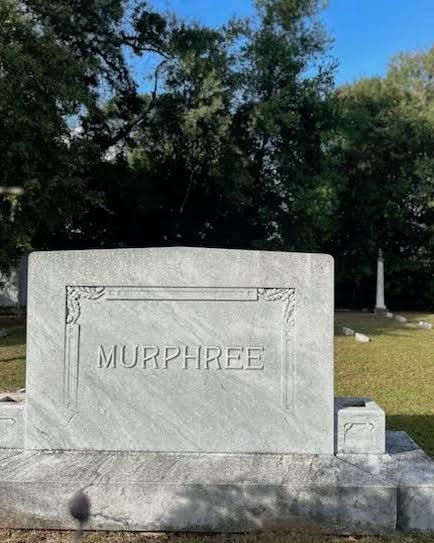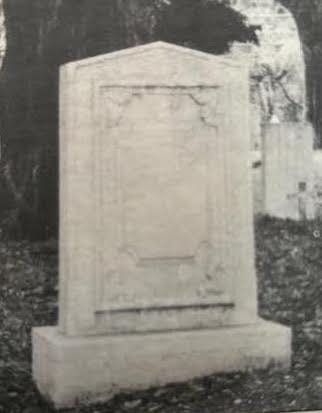A bus tour of Pike County historic sites
…. Conducted by the late Bill Rice, Sr … And the most news-worthy local events of 2001 …

Editor’s note: A staple of the new on-line Troy Citizen will be stories about Troy and Pike County history. Fortunately, I have access to one of our community’s best history sources, my late father (Bill Rice, Sr.) who wrote a weekly history column for the Citizen for approximately seven years.
Dad wrote two excellent local history books. He also routinely gave bus tours of historic county sites for Chamber of Commerce and Class Reunion groups.
While my father passed away in 2010 and can no longer give his bus “ride-arounds,” he did have the foresight to produce a written narrative of his very popular tours, which we published in the January 2002 edition of Pike’s Peek. (In addition to The Troy Citizen, our staff also produced this recurring monthly magazine).
Readers interested in local historic figures and landmarks will hopefully enjoy this piece - and learn some interesting tidbits about our community’s fascinating history. I know I did! - Bill Rice, Jr.
I do two Pike County history tours annually for the Pike County Chamber of Commerce and the Junior Pike County Leadership Class under the tutelage of Tammy Powell.
I thought you might be interested in where I take these groups and, maybe, just maybe, you might decide to take your own historical tour some Sunday afternoon.
… A good start would be the Pioneer Museum of Alabama to learn its history and establish a command post for the coming journey. From there, a casual drive out on Highway 231 and a discussion of when and where this highway was first started and finished seems appropriate.
Historic neighborhoods of Troy
Of course, a turn down Murphree Street and over to historical College Street cannot be resisted.
College Street itself has a story, but the homes along this street and its past residents make the best story. Some homes had multiple dwellers of significance.
Along this street we discover where Jere Clemons Henderson, Leo and Elizabeth Bashinksy, Oliver Cisero Wiley, Frank Staunton Wood, Graph Hubbard, Charles Henderson, Jeremiah Augustus Henderson, Thomas Eugene Murphree, Bailey Talbot, William Hilliard Murphree, Lucien Gardner and William Samford all lived.
This list of characters includes a governor, an adjutant general, a United States Congressman, financiers of magnitude, a chief justice of the Alabama Supreme Court, a legacy of a War Between the States hero, a historian of national importance and an ultra-successful cotton broker.
From this heritage, College Street became one of the most significant streets in the state of Alabama.
You can never leave College Street without a visit to the Murphree Cemetery. This unique family plot tells some of the best and most significant history that exists in Troy.

Here we not only find the remains of James Strother Murphree, the first Murphree to come to Troy in 1844, but also the remains of his important son, Joel Dyer Murphree, and his son-in-law, Urban Jones, the man who brought the railroad to Troy. (Editor’s note: Dad always called this the most important event in Troy history).
Downtown, the Square, the Three Notches …
While in this area, with a turn down Cherry Street, a visitor can take in the beauty of the downtown churches and also Walnut Street, another street full of historical characters, including Wilson Bibb Folmar, patriarch of the Folmar family of mayors in Alabama (including long-time Montgomery mayor, Emory Folmar).
Then it is on to North Three Notch Street, and its history, which is grand. A tour around the Square is mandated with a discussion of the old Courthouse, the Confederate Memorial and the origination of the infrastructure of Troy.
I can never pass up a detour from here to Troy’s historic City Hall, which is a former Carnegie Library and the last remaining building of the Troy Normal School’s downtown campus.
After that, we find ourselves back on Three Notch for a slow cruise past the Beulah Cemetery and Ann Love’s grave, which is besides the resting place of her son, Andrew Pickens Love.

Out and about in the county …
Then it is straight down Three Notch to Meadow Grove and a turn toward Palmyra and the grave of Eli Henderson and his wife. The grave site is marked with an obelisk that identifies the resting place of the fist Henderson to move to this area in 1818, which is before Alabama became a state.
After we reach the dead end of this road, I always turn toward Palmyra and head for the village of Henderson and Gainers’ Store and the site of the birthplace of Gov. Charles Henderson.
From there, it is on to the beautiful Little Oak Methodist Church and then to to Hephzibah where we find, arguably, the oldest house in Pike County (circa 1844), the Allred House.
The dilemma that is created by this tour is that I cannot include a stop at Springhill to point out Dr. O. N. Edge’s birthplace and where, for decades, his car remained sheltered in a still-standing rock building.
I know a colorful story about Dr. Edge that is half legend, but when I go to Springhill, I always tell it as truth.
Beautiful old Brundidge
Instead of going to Springhill, I head toward Brundidge. On the way, I point out where Jim Ballard’s Place was located. Depending upon the age of my tour group, I might even include an anecdote or two about him.
Finally, arriving in Brundidge, I return to Church Street and where I think Collier’s Store, the first business in Brundidge, was located.
As we drive around town, my lectures include the origins of the name of Brundidge, the part Alabama Midland Railway played in its development, a tale about the temporary change of the name of Brundidge to Woolfolk, and the important part whiskey played in the establishment of Brundidge.
I would be remiss if I did not tell a brief history of the Bass Home, now City Hall, and Tupper Lightfoot’s house, which is the library in Brundidge. Tupper’s history is certainly one of the most colorful and interesting in Pike County.
Banks or Monticello?
Next, another tour quandary develops for me. When I arrive in Banks, I can never decide whether to head toward Monticello - our County Seat before it moved to Troy in 1838 - and then on to Hobdy Bridge and the Battle of Hobdy Bridge, or East Creek, your choice of names, or head over to Union Hill.
If I go to Monticello and Hobdy Bridge, I always discuss the conflicts in history concerning the time and place for the last battle (east of the Mississippi River) with the Creek Indians.
Getting sleepy in Saco
If the tour uses this route, this dictates I stay on the Chunnenunggee Ridge and go down to Saco where I can talk about Jeff Sorrell.
This is quite a drive so to keep my passengers from falling asleep, I tell a long story about the Folmars, their significance, how Jeff Sorrell wound up with a portion of their land, and how some of the Folmar money travelled all the way back to where it started.
The story does no good; my passengers go to sleep anyway. To wake them up, I tell them about Gussie Joiner … and time the end of the story to when I turn right at the Joiner Store.
China Grove, Orion and some politically-incorrect history…
So now I am in Saco, and have no choice but to go to China Grove and Orion. I know the way, and along the trail, I am full of stories about the Townsends of China Grove, when Andrew Pickens Love lived there, and how China Grove became the original seat of justice in Pike County.
At China Grove, we must choose between a journey on the Meriwether Trail over near Pine Level or a trip to Orion. On more than one occasion, I have chosen one road when I thought I was on the other. When I do this, I never worry; I just adjust my stories to where I am going.
Since Orion has more history, I always try to go that way. Here we find the Talbots, the McClouds and the famous and fascinating personality, Soloman Siler.
Although his history is not politically correct these days, I tell it anyway. (Editor’s note: I think Mr. Siler was the largest slave owner in Pike County). You cannot miss the Siler house in Orion, which is another place that is arguably the oldest house in Pike County (circa 1844).
A visit to Orion would not be complete without a stop at Solomon Siler’s grave and a short trip to the site of the Orion Institute, the first advanced education institution in Pike County.
Gault saga is the ‘wake-up story’
From Orion, it is back to Troy via old U.S. 231, the Guinea, the Little Store and then to the museum. But that’s not the way I like to go.
You see, back at Banks I usually start the saga of Hayden Younbblood and Eugene Gault and the shootout at the A.E. Hickman country store and the Pleasant Hill Church and Cemetery that occurred May 22, 1962.
So it is down to the Needmore Road and then a turn toward the church where Gault died in a hail of bullets. For some reason, my passengers always perk up when I get to this part of my tour and lecture.
(Editor’s note: See future Troy Citizen’s - and one Reader Comment today - for more on Gault’s shocking crime spree.)
Banks, Goshen and the choo-choo trains …
I always incorporate the stories of Banks and Goshen in my sojourns. However, it is difficult to include Goshen in my ride-around without going there from the Little Oak Methodist Church.
Both villages were affected by railroads and they were not the same lines. So a journey to Goshen allows me to tell the Mobile and Girard Railway story, and a Banks’ visit invites the telling of an Alabama Midland Railroad history.
I enjoy these tours, but I have found, as I grow older, that I talk myself out when I make them. If anyone can believe it, I hardly say anything for about three days after a tour.
But I am going to keep doing them as long as I am invited. I hope I see you one day.
If that’s not possible, take a ride around our county and see where some of our history was made.
*** (Thank you for sharing Troy Citizen content on social media and with your email contacts.) ***
Key County Events in … 2001
The unforgettable world event in 2001 was the terrorist attacks on 9-11.
In its last December edition, every year The Troy Citizen published a “Year-in-Review” article, summarizing the big local news events of the prior 12 months. I usually wrote these articles, but my father wrote this one for our monthly edition Pike’s Peek in early January 2002.
According to Dad’s article, the most news-worthy local events of 2001 included …
- Brundidge Mayor Jimmy Ramage announced a brand new Wal-Mart Distribution Center will be constructed in Brundidge.
“The building will be become one of the the largest in Alabama and will encompass more than 900,000 square feet,” wrote Rice, Sr. “It will also employ more than 500 people.”
- Lockheed Martin announced their new $3.8 billion missile system, the Theater High Altitude Area Defense Program (THAAD), will be produced at its plant in northern Pike County.
At the time, the program was said to create up to 500 jobs over the “next 10 to 13 years.”
- Bush Memorial Baptist Church initiated the construction of a new sanctuary with a price tag of $1-million-plus. “The beautiful sanctuary is nearing completion (in early January 2002).”
- Downtown was struck by a fire on August 29, 2001. Four buildings either burned down or later had to be razed, including Mezrah’s Shoe Store and the former Quarles’ Pool Hall.
“The loss was estimated at $500,000 and left a hole that serves as an ugly reminder of the catastrophe. (Editor’s note: The fire was just three doors up from the old Troy Citizen building - Now Blue Key Properties.)
- Also, “Carter Brothers in Brundidge and the Troy Recycling Center both re-opened with improved facilities after disastrous fires in 2000.”
- The City of Troy and State Highway Department continued a lighting project that provided new street lights on Highway 231 from the airport exit to (the then location of) Wal-Mart on the south side of town.
- Twelve new tennis courts (now named in honor of long-term Mayor Jimmy Lunsford) and a “gorgeous girls softball field” were completed on Elm Street.
- “Troy State also announced, after the football season in 2001, it would once again expand Memorial Stadium, this time by 13,000 seats. The project will cost approximately $11 million and will be funded by a bond issue. The enlargement will make the stadium’s capacity slightly over 30,000 seats.”
- In the 2001 football season, Troy’s football team - then in its first official year as a Division-I program - secured one of the biggest wins in program history, beating Mississippi State of the SEC.
- Cornelius Griffin, an alumnus of Pike County High School and a former standout at Alabama, became the first athlete from Pike County to ever play in a Super Bowl for the New York Giants.
- On the restaurant front, Troy got an Arby’s, Waffle House and Blimpie’s. Twenty three years ago, video stores were still popular and Troy got a Video Warehouse.
- The Cobra helicopter - which still hovers on a stand in Bicentennial Park on Highway 231 - made its debut landing in 2001, a project made possible by State Rep. Alan Boothe. The helicopter was painted and retrofitted by Sikorsky in Troy.
- “We lost Kim Lunsford in June. Her life represented a magnificent struggle to live. Her death moved all of us to tears.”
- “The City of Troy downtown beautification projects continue as new sidewalks, old-style lamppost lighting, parking and planter areas are being added the eastern side of town. A gazebo was constructed on the square and quickly became a popular spot.”
I like Dad’s closing paragraph from this “Year-in-Review” piece:
“As for me, if I had known I was going to live this long, I would have taken better care of myself because this sure is a wonderful place to live.”
***
(Subscriptions are FREE, $6/month or $55/year. Thank you for supporting The Troy Citizen on-line newspaper).





Bill, you mentioned the store where Hayden Youngblood was killed...it was HICKMAN'S. I was only a little girl but remember vividly that day! We lived on the corner where Gault turned and went to the cemetary where he ultimately was shot.
Would it be too much to ask if you could ride around and video all the places you mentioned and post it? I know where some of them are but not all